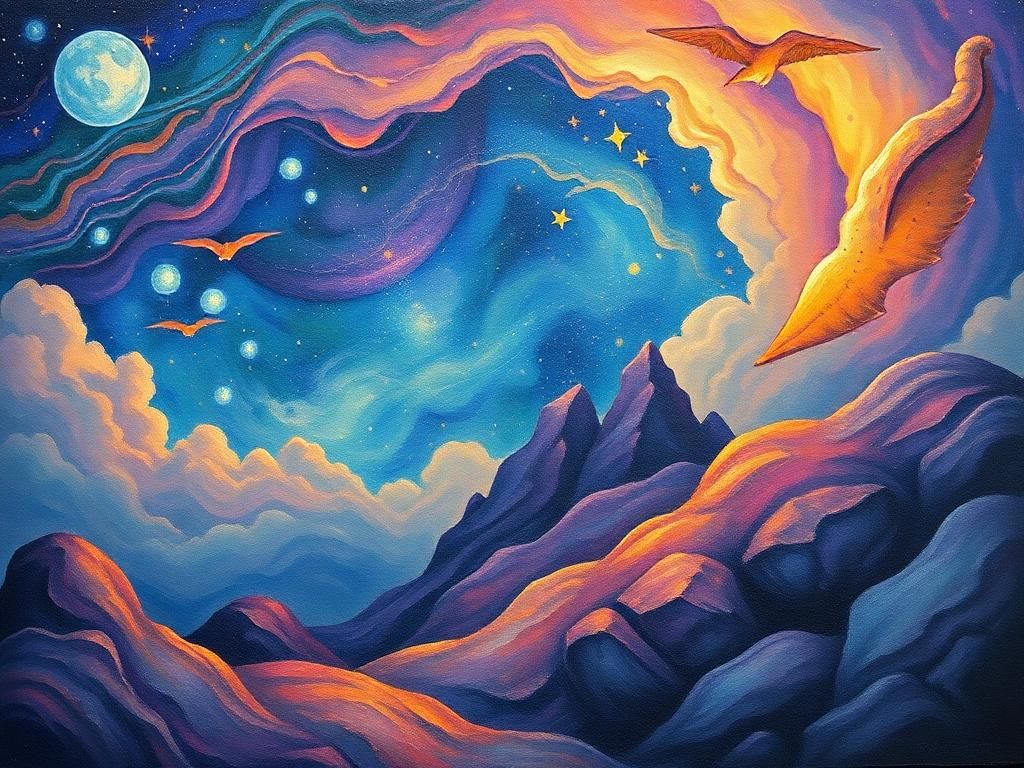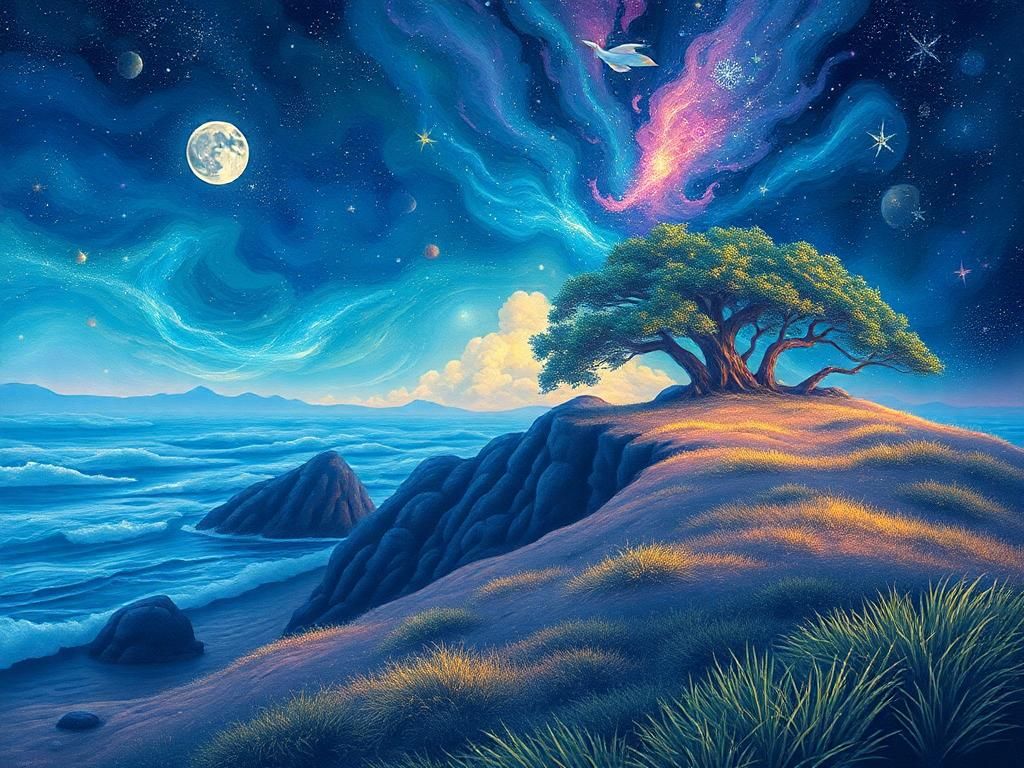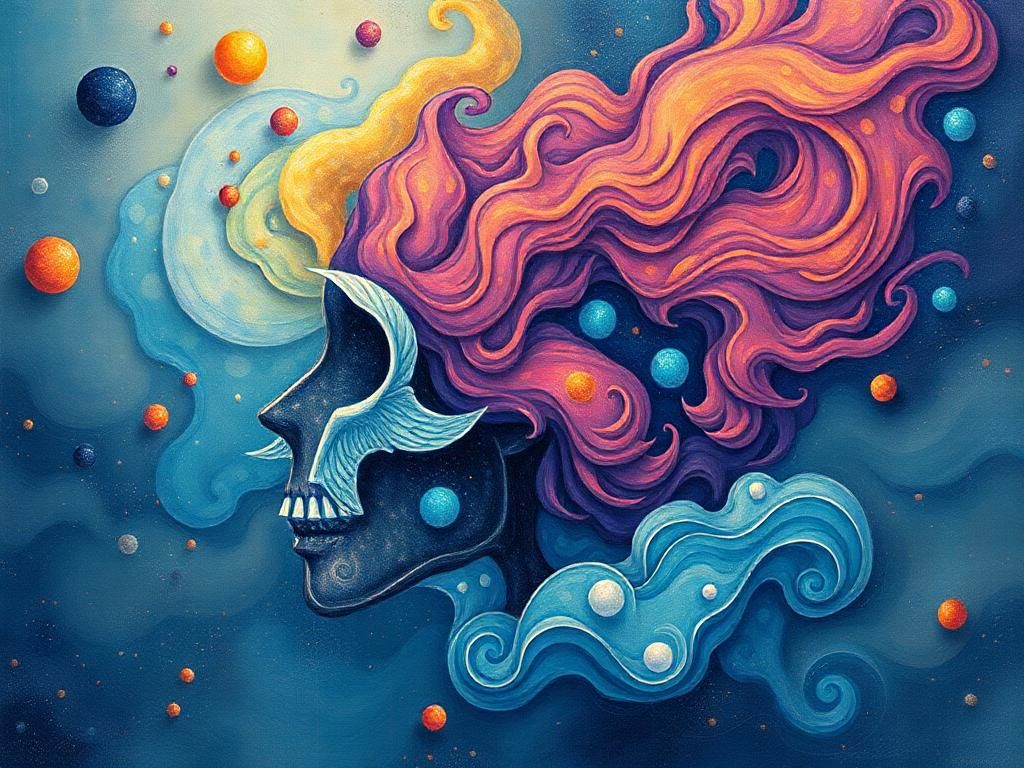The concept of dream artwork captivates artists and viewers alike, as it delves into the subconscious, revealing a realm where reality intertwines with fantasy. This intriguing genre transcends mere visuals, inviting us to explore our innermost thoughts, emotions, and experiences. The term “dream artwork” encompasses a variety of artistic expressions rooted in dreams, ranging from vivid representations of night visions to abstract interpretations that reflect deeper psychological themes. Distinguishing between dream-inspired art, which draws directly from one’s dreams, and dream-themed art, which may leverage the aesthetics or motifs associated with dreams, is essential for appreciating this genre fully.
Historical Context
Brief Overview of Dreams in Art through History
Throughout history, dreams have influenced art, often serving as a source of inspiration for countless artists. From the Romanticists, who sought to express the individual’s emotional experience, to the Surrealists, who aimed to unlock the unconscious mind, dreams have played a pivotal role in art’s evolution. In classic works, dreams were often portrayed as ethereal and mysterious, while modern movements have embraced a more chaotic interpretation, reflecting the complexities of human thought.
Influential Movements
Surrealism stands out as one of the most prominent art movements directly influenced by dreams. Pioneered by artists like Salvador Dalí and Max Ernst, surrealism sought to explore the irrational and the subconscious, presenting dreamlike landscapes and bizarre juxtapositions. Surrealist art often blurs the boundaries between reality and dreams, captivating audiences with its unexpected imagery and themes.
The Psychology of Dreaming and Art Creation
The Role of Dreams in Creativity
Dreams have long been recognized as powerful catalysts for creativity. Many artists harness the rich tapestry of dormant ideas and imagery found in dreams, using their experiences as a wellspring for artistic inspiration. Notable figures, including Salvador Dalí and Max Ernst, famously acknowledged their dreams as foundational sources for their creative processes, manifesting captivating visuals that challenge our perceptions.
Freud and Jung: Theories on Dreams
The exploration of dreams within psychological frameworks sheds light on their significance in artwork. Sigmund Freud, considered the father of psychoanalysis, proposed that dreams are a window into our unconscious desires and fears. In contrast, Carl Jung introduced concepts of the collective unconscious and archetypes, emphasizing how dreams can connect individuals with universal themes and cultural narratives. These theories have had lasting impacts on artists seeking to explore deeper meanings in their work.
Techniques for Creating Dream Artwork
Visual Techniques
Creating dream artwork involves employing various visual techniques to evoke the ethereal quality of dreams. The use of color, light, and shadow can transform ordinary images into dreamlike scenes. Artists often blend elements of realism and surrealism, employing soft, muted colors to create an atmosphere that feels both familiar and otherworldly.
Mixed Media Approaches
Mixed media approaches can significantly enhance the dreamlike quality of artwork. Artists may incorporate a variety of materials, such as paint, digital elements, or even tactile objects. Techniques like collage and assemblage allow creators to piece together different elements, reflecting the fragmented nature of dreams and providing rich, layered meanings.
Imaginative Landscapes and Fantastical Elements

Designing imaginative landscapes filled with whimsical environments and fantastical creatures is another hallmark of dream artwork. By utilizing symbolic imagery and transforming ordinary settings into extraordinary realms, artists engage viewers’ imaginations, encouraging them to immerse themselves in this dreamlike journey.
The Interpretation of Dream Artwork
Symbolism and Themes
When contemplating dream artwork, understanding common symbols can enrich interpretation. Elements such as water, flight, and masks often appear in dream-related visuals, symbolizing transformation, freedom, and the hidden parts of the self. Major themes include the unconscious, desire, fear, and personal transformation, each offering a glimpse into the artist’s inner world.
Viewer Experience and Interpretation
The experience of viewing dream artwork is highly subjective, influenced by individual backgrounds and encounters. Personal experiences shape how one perceives these creations, prompting viewers to explore their subconscious connections. Engaging with dream artwork can provoke introspection, revealing hidden emotions and insights.
Prominent Artists and Their Contributions
20th Century Artists
Artists like Salvador Dalí and Max Ernst are iconic figures in the realm of dream artwork. Dalí’s techniques, characterized by hyper-realistic detail and bizarre imagery, come together in masterpieces like The Persistence of Memory, capturing the fluidity of time and memory. On the other hand, Max Ernst’s pioneering surrealist methods, through techniques like frottage and grattage, opened new avenues for expressing dreamlike visions.
Contemporary Dream Artists
In the contemporary art scene, a new generation of artists continues exploring dream themes. Artists leverage digital platforms and technologies to express their visions in innovative ways. Notably, the rise of digital art and NFT artists has revolutionized the field, allowing for vibrant dream artwork that pushes boundaries while capturing the allure of the dream world.
The Role of Technology in Dream Artwork
Digital Art Creation and Techniques
The integration of technology has transformed how dream artwork is created. Software programs like Adobe Photoshop and Procreate enable artists to experiment with textures, colors, and layering techniques to visualize dreams in new dimensions. Additionally, animation and 3D modeling tools allow creators to bring their dreamlike visions to life in captivating ways.
Online Platforms and Communities
Social media and online platforms have significantly impacted the visibility of dream artwork. Platforms such as Instagram and DeviantArt provide spaces for artists to showcase their creations, connect with audiences, and engage with fellow dream enthusiasts. Additionally, virtual reality experiences and online exhibitions allow users to immerse themselves in dream-inspired worlds from the comfort of their home, expanding the reach of dream artwork.

Creating Your Own Dream Artwork
Steps to Get Started
If you’re inspired to create your own dream artwork, consider starting with a dream journal. Recording your dreams upon waking can serve as a rich source of inspiration. Engaging in exercises that nurture creativity, such as free association and automatic drawing, can help unlock ideas that may translate beautifully into art.
Finding Your Unique Style
Exploring various mediums and techniques is crucial for discovering your unique style. Experimenting with different forms of expression allows for personal growth as an artist. Ultimately, embracing your subjective experience and emotional authenticity can lead to powerful dream artwork that resonates with both you and your audience.
Conclusion
Reflection on the Significance of Dream Artwork
The relationship between dreams and art is a profound reflection of the human experience. By understanding and embracing dream artwork, we delve deeper into our unconscious minds, exploring the intricate web of thoughts and emotions that shape our identity. Through expressing our dreams artistically, we enhance the conversation about our inner lives.
Call to Action
We encourage readers to explore their own dream-inspired creations and share them with the community. Joining art-centric workshops or online groups focused on dream themes can cultivate connections, inspiration, and growth among like-minded artists.
Additional Resources
Books and Articles
- “The Interpretation of Dreams” by Sigmund Freud
- “Man and His Symbols” by Carl Jung
Online Courses and Workshops
- ArtStation courses on digital painting and surrealism
- Skillshare workshops on dream journaling and creativity exercises
Art Communities
| Key Topics | Details |
|---|---|
| Influential Movements | Surrealism, Romanticism, etc. |
| Notable Artists | Salvador Dalí, Max Ernst, contemporary digital artists |
| Creative Techniques | Mixed media, collage, color theory |
| Interpretation Themes | Transformation, desire, fear, unconscious |
| Online Platforms | Instagram, DeviantArt, virtual reality exhibitions |
Frequently Asked Questions (FAQ)
- What is dream artwork?
Dream artwork refers to artistic expressions inspired by or reflecting the symbolism and emotions found in dreams. - How can I use my dreams for inspiration in my artwork?
Keeping a dream journal can help capture dream images and emotions, serving as a valuable source of creativity. - What techniques can I use to create dreamlike visuals?
Utilizing color, light, shadow, and mixed media techniques can help evoke a dreamlike quality in your art. - Which artists are renowned for their dream artwork?
Notable figures include Salvador Dalí, Max Ernst, and contemporary digital artists. - How does technology influence dream artworks today?
Digital tools and online platforms allow artists to create and showcase their dream art in innovative ways. - What themes are commonly explored in dream artwork?
Common themes include transformation, subconscious exploration, desire, and fear. - Why is it important to explore dream artwork?
Dream artwork enables introspection and understanding of our subconscious selves, enriching our overall artistic expression. - Where can I find information on dream artwork?
You can access various books, online courses, and art communities focused on dream themes and techniques. - What steps can I take to find my unique style in dream artwork?
Experimenting with different techniques and mediums and embracing personal experiences will help you develop your style. - How can I engage with the dream art community?
Joining workshops, social media groups, and online forums can foster connections with like-minded artists and enthusiasts.
